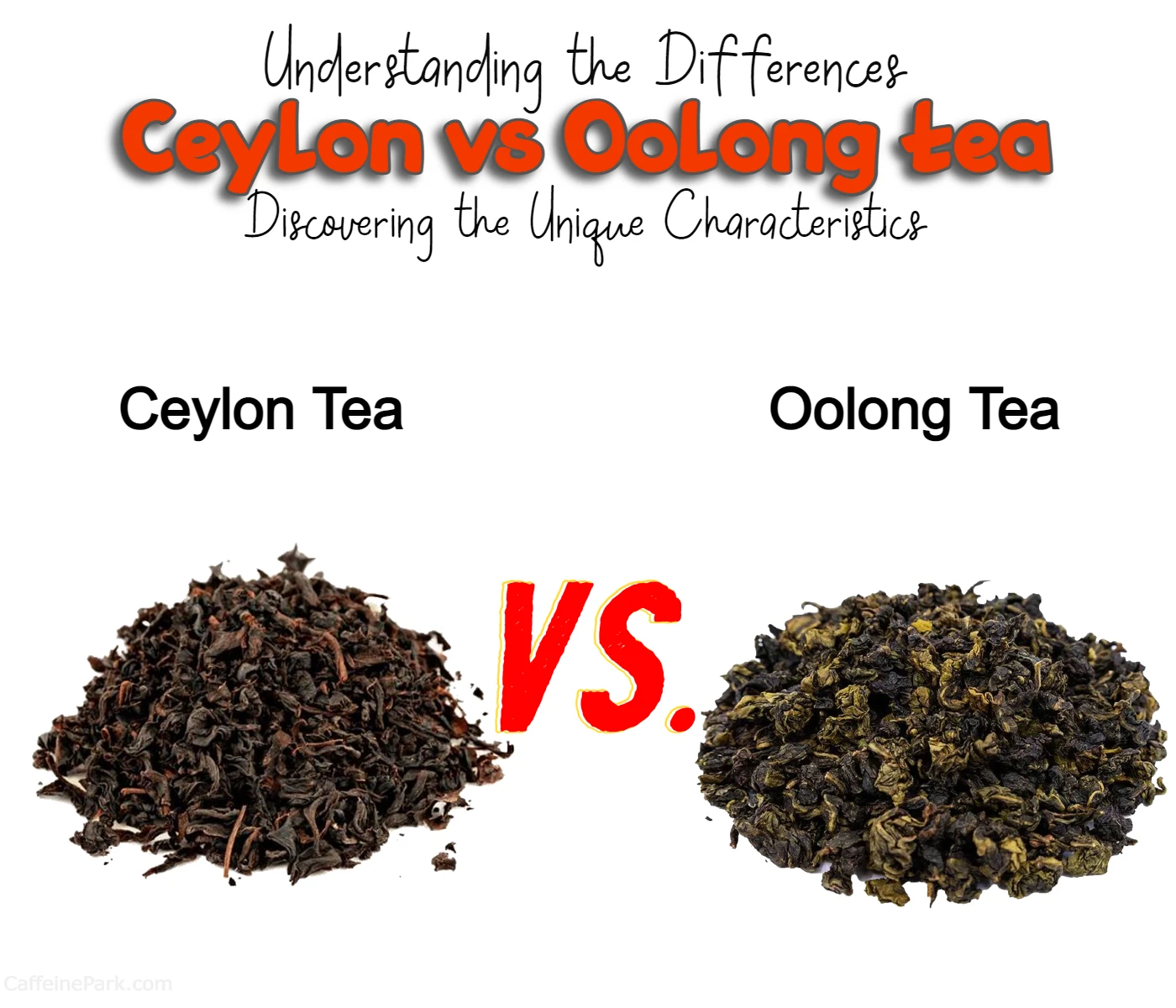
Are you a tea lover who is always on the lookout for new and exciting varieties to try? If so, then you’ve likely come across Ceylon and Oolong tea in your search for the perfect cup. While both teas are beloved by many, they each have unique characteristics that set them apart.
In this blog post, we’ll explore the differences between Ceylon tea and Oolong tea, including their flavor profiles, caffeine content, and health benefits. Whether you’re a fan of robust, full-bodied teas or prefer something more complex and nuanced, there’s sure to be a tea on this list that piques your interest.
So, grab a cup of your favorite tea and settle in as we dive into the world of Ceylon and Oolong tea. By the end of this post, you’ll have a better understanding of these two popular varieties and be ready to make an informed decision about which one to try next. Don’t forget to read to the end for our top recommendations on the best Ceylon and Oolong teas to add to your collection.
Ceylon Tea | Oolong Tea | |
|---|---|---|
| Flavor Profile | Robust | Complex |
| Taste Range | N/A | Fruity, Nutty, Floral, Earthy |
| Caffeine Content | Higher | Lower |
| Weight Loss | Yes | Yes |
| Mixability | Yes | Yes |
| Cooking/Baking | Yes | Yes |
Differences between Oolong tea and Ceylon tea
First things first, let’s start with the basics.
What is Ceylon tea?
Ceylon tea is a type of black tea that is grown in Sri Lanka and was formerly known as Ceylon. This tea has a bold and robust flavor, with a hint of citrus and spice. Ceylon tea is also known for its reddish-brown color and strong aroma.
What is Oolong tea?
Oolong tea is a type of tea that is primarily grown in China and Taiwan. It is a partially fermented tea, meaning that the leaves are allowed to oxidize for a shorter amount of time than black tea, but longer than green tea. Oolong tea has a complex flavor profile that ranges from floral and fruity to nutty and earthy.
Now that we’ve covered the basics, let’s dive deeper into the differences between Ceylon tea and Oolong tea.
Origin
As mentioned earlier, Ceylon tea is grown in Sri Lanka, while Oolong tea is primarily grown in China and Taiwan. While Ceylon tea is a single-origin tea, meaning it comes from one specific region, Oolong tea can come from various regions and have different flavor profiles.
Processing
Ceylon tea is fully oxidized, which means that the leaves are allowed to wither and oxidize until they turn a reddish-brown color. This gives Ceylon tea its bold and robust flavor. On the other hand, Oolong tea is only partially oxidized, which gives it a more complex flavor profile.
Flavor
As mentioned earlier, Ceylon tea has a bold and robust flavor with a hint of citrus and spice. It is often described as having a strong and full-bodied taste. On the other hand, Oolong tea has a more complex flavor profile that can range from floral and fruity to nutty and earthy. It is often described as having a sweet and mellow taste.
Caffeine content
When it comes to caffeine content, there is a noticeable difference between Ceylon and Oolong tea. A typical cup of Ceylon tea (which is around 8 ounces) contains between 50-60 milligrams of caffeine, while Oolong tea contains caffeine of 37 mg per 8 fl oz cup. This means that Ceylon tea has a higher caffeine content than Oolong tea, which may make it a better choice for those who need an extra boost of energy.
It’s important to note, however, that caffeine content can vary depending on factors such as brewing time, water temperature, and the quality of the tea leaves. Additionally, some people are more sensitive to caffeine than others, so it’s always a good idea to monitor your caffeine intake and adjust accordingly.
If you’re looking to reduce your caffeine intake, Oolong tea may be a better option than Ceylon tea. However, if you need a pick-me-up to start your day, Ceylon tea might be a perfect choice. Ultimately, the decision comes down to your personal preferences and needs.
Health benefits
Both Ceylon tea and Oolong tea have health benefits. Ceylon tea is high in antioxidants, which can help reduce the risk of chronic diseases such as cancer and heart disease. Oolong tea is also high in antioxidants and has been shown to have a positive effect on weight management.
Brewing methods
Both Ceylon tea and Oolong tea can be brewed using a variety of methods. For Ceylon tea, it is recommended to use water that is around 200°F and steep the tea for 3-5 minutes. For Oolong tea, it is recommended to use water that is around 190-200°F and steep the tea for 3-5 minutes.
Conclusion
In conclusion, while both Ceylon tea and Oolong tea are types of tea, they have distinct differences in origin, processing, flavor, caffeine content, health benefits, and brewing methods. Whether you prefer a bold and robust flavor or a more complex flavor profile, both Ceylon tea and Oolong tea offer unique and delicious taste experiences. So go ahead and try them both!
Alternative to Oolong tea and Ceylon tea
If you’re not a fan of Ceylon or Oolong tea, don’t worry! There are plenty of other tea varieties out there to explore. Here are a few options to consider:
- Green Tea: Green tea is a popular option that is known for its high levels of antioxidants and health benefits. It has a light and refreshing flavor that is perfect for those who prefer a milder taste.
- Black Tea: If you enjoy a strong, full-bodied tea, then black tea might be the right choice for you. It has a rich flavor that can be enjoyed plain or with a splash of milk and sugar.
- Herbal Tea: Herbal teas are caffeine-free and come in a wide range of flavors and blends. From peppermint and chamomile to fruity and floral options, there’s an herbal tea for every taste preference.
No matter which tea you choose, there’s no denying the comfort and enjoyment that comes from sipping a warm cup of tea. So, take some time to explore the many varieties available and find the one that speaks to you. Who knows, you might just discover a new favorite!
FAQs
Ceylon tea has a stronger and more robust flavor, while Oolong tea has a more complex flavor profile that can range from floral and fruity to nutty and earthy.
Ceylon tea generally has more caffeine than Oolong tea. However, the exact amount of caffeine can vary depending on the brewing method and other factors.
Both Ceylon tea and Oolong tea have been shown to have a positive effect on weight management. However, Oolong tea has been specifically studied for its weight loss benefits and is often recommended for this purpose.
Yes, Ceylon tea and Oolong tea can be mixed together to create a unique flavor profile. However, it’s important to keep in mind that the flavor and caffeine content may be different than if you were to brew each tea separately.
Yes, both Ceylon tea and Oolong tea can be used in cooking and baking to add flavor and complexity to dishes. For example, you can use Ceylon tea to make tea-infused desserts like cakes and cookies, while Oolong tea can be used to add a unique flavor to marinades and sauces.
Read More:





